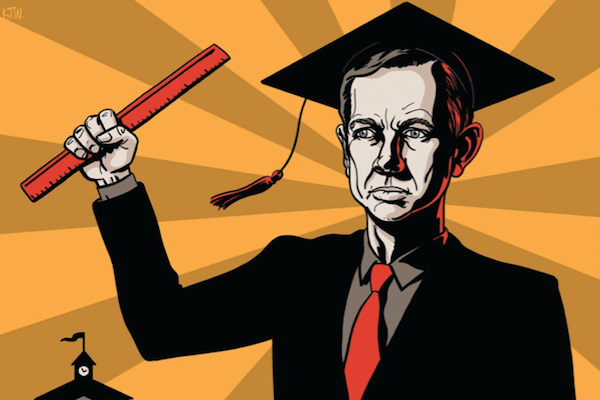On Tuesday next week, The Spectator will hold its third annual Schools Revolution conference. On the agenda will be the striking failure of new ‘free schools’ to keep pace with the rising pupil demand. Michael Gove, the education secretary, will be our keynote speaker. To book tickets, click here.
A couple of month’s ago, Fraser warned that the recent baby boom would lead to a schools crisis, with demand for places outstripping supply. Today’s new figures from the Department for Education show that the crisis has already begun. This year, there are more primary school pupils than there were 30 years ago, but 3,800 fewer primary schools.

Since last year, the number of primary pupils has risen by 77,000, but the number of primary schools has fallen by 66 — despite the opening of the first 18 primary free schools.
The combination of ever-fewer schools and ever-more pupils has meant that the average number of pupils per primary school has risen sharply in the last few years: from 229 in 2007 to 237 last year and 243 now. 30 years ago, it was just 190.

Primary schools are being overwhelmed by the higher intake of the past few years, and their classrooms are getting ever-more crowded. The average infant class size is now 27.2 pupils, up from 25.6 five years ago. And 47,290 children are in infant classes bigger than 30, double the number that were five years ago.
But the worst is yet to come. The number of primary pupils is forecast to rise by around 100,000 a year for the next six years. Just to keep pace with this increase (and keep that pupils-per-school ratio at 243 — already the highest since at least 1977), we’d need to open an extra 430 schools every year.
And Michael Gove’s free school revolution doesn’t look like it’ll be able to meet the challenge. Far from it, in fact. Only 63 mainstream free schools have been approved to open this year or the next, of which just 21 are primaries and eight more are all-age schools.
P.S. It’s been pointed out that there is some extra capacity in primary schools at the moment. The latest stats show that, in May 2011, there were 444,410 unfilled places in state-funded primary schools. But the fact that Cornwall has spare capacity for 4,500 pupils won’t help much, given that its primary population is forecast to grow by only 150 over the next five years. Places like Barking and Dagenham — which has spare capacity for only 800 children but is expecting 8,000 more by 2016 — will feel the squeeze anyway.
Actually, according to the local-level forecasts, just under half of English local authorities won’t need more primary schools in 2016 than they had in 2011, as they have enough spare capacity to cope with the expected rise in pupil numbers. But across the 82 that will, the increase in demand will exceed the spare capacity by around 160,000 pupils. The average capacity (as opposed to actual number of pupils) of a state-funded primary school is 252, so they’ll need something like 630 new schools, or 158 a year for four years. Whichever way you look at it, those 29 new primary and all-age free schools aren’t going to be nearly enough.






Comments